Any teacher that has had to read umpteen hundred essays on the same inventors knows my pain. It’s the exercise in rolling your eyes when the student says that their essay will be on the same inventor, who invented that thing that seems to be a go-to for elementary school kids. There’s a void of books aimed at that audience who need to know about more people that history might have forgotten. Josephine and Her Dishwashing Machine is an illustrated book that joyously plugs that hole.
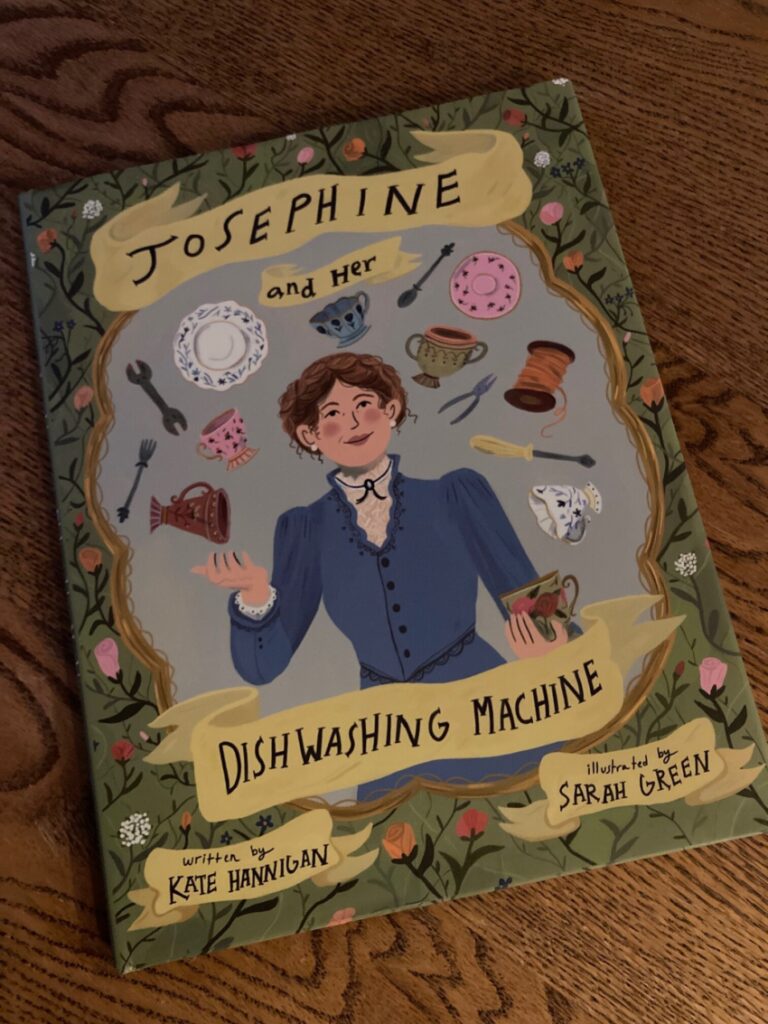
It’s a device that most of us see every day, yet those of us who don’t are painfully aware of its absence. Going without its use, after you’re accustomed to using it, requires a paradigm shift in how you prepare your meals and how you cook. Yeah, the dishwasher isn’t an invention that would make it into your top 5 list, but it’s one that revolutionized businesses and home life.
It begins with Josephine Cochran in the time period just after the Civil War. She came from a family of inventors and creative people and loved entertaining. She added an “e” to her last name, because these were modern times and all, but noticed that her after-party cleanup was decidedly primitive. The dishes were getting chipped, the sink was clogged and disgusting, and keeping the clean cutlery up to speed was eating into her social time.
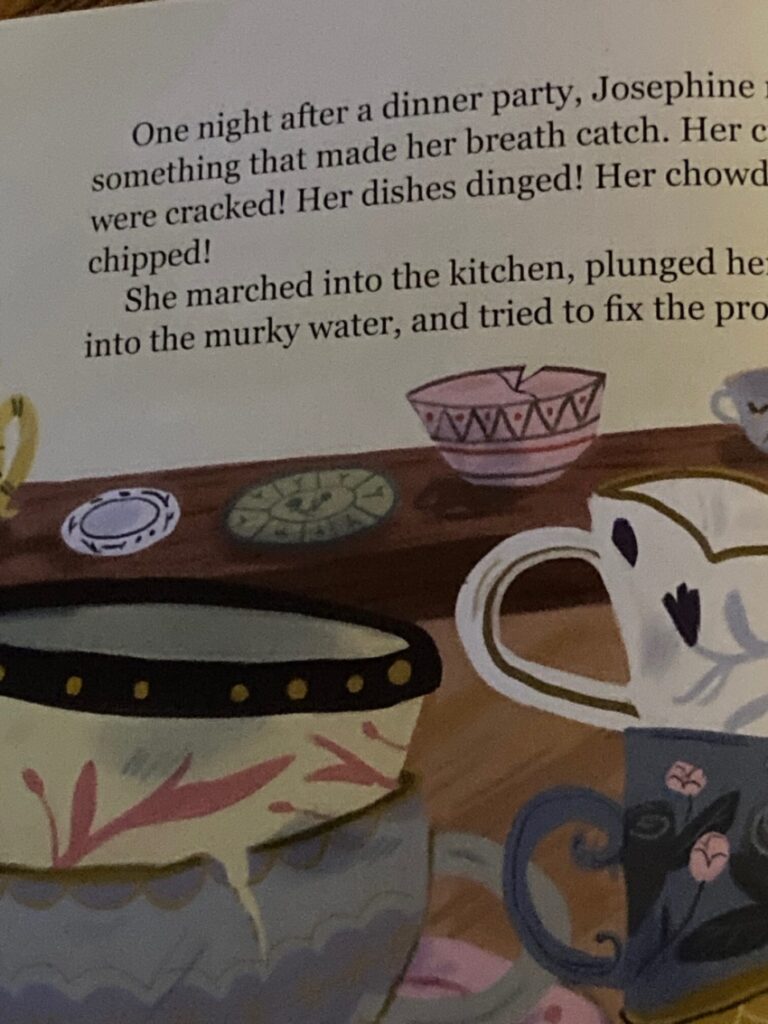
This period of time was yielding lots of great inventions like the telephone and lightbulb. But Margaret E. Knight created a machine that makes grocery bags and Cochrane’s father and grandfather had built bridges and steamboats, so she started thinking about the object in her sink.
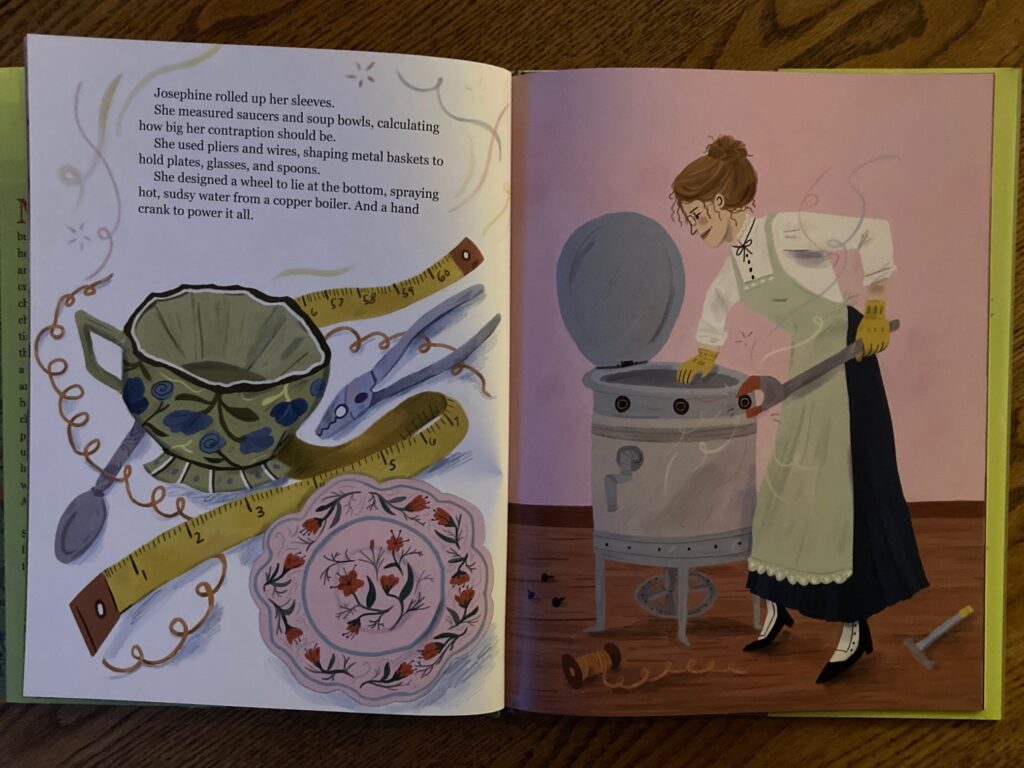
There was a machine created in 1850 that resembled a dishwasher, but it merely got them wet and didn’t disinfect the dishes. She researched that idea, tinkered with George Butters, a local mechanic, in her backyard to see what they could create. Some of their incarnations came close, but most of them didn’t, so they kept working. Josephine’s life took a major hit when her husband passed away in 1883. She quickly went into dept and her dream of keeping the inventor chain consistent in her family was fading.
She did the Dave Ramsey thing and paid off her debts little by little. Once she was out of that hole she regrouped with Butters and the two created Patent No. 355,139, the washing machine. Josephine took her prototype to a world’s fair called the Columbian Exposition, won first prize, and partnered with organizations that had hotels, restaurants or other businesses. This revolutionized the speed and sanitation that these places could conduct their business, and it wasn’t long before her initial desire, to help out people at home became a reality.
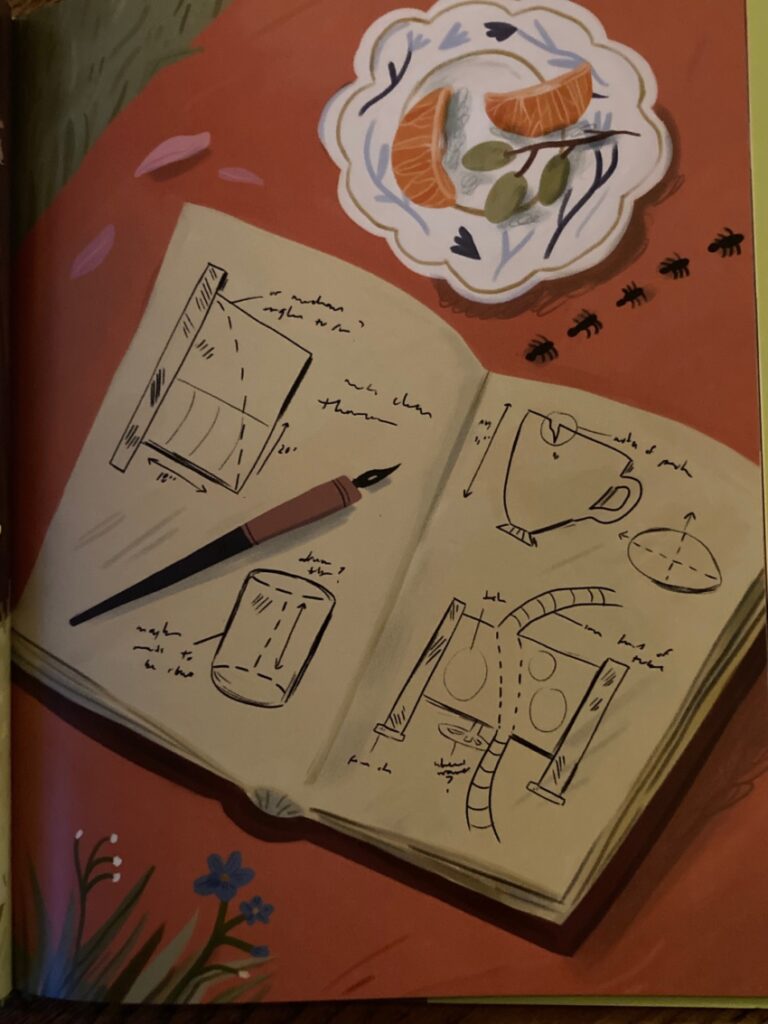
This is a fascinating story that elementary ages don’t know. It teaches kids that they can create anything if they have the idea, and the patience to keep trying when they don’t succeed. That’s a big if, but it reinforces the notion that not succeeding at something on your first attempt doesn’t make you a failure. This is a lesson that every, and I mean every student in elementary school can hear numerous times. Each time it’ll have a slightly different vehicle or climax, but they need to be reminded that school at that age, is a safe place to fail.
Yeah, it is technically a lesson in Josephine and Her Dishwashing Machine, but it doesn’t feel like learning and certainly isn’t preachy. This is more about the spirit of not giving up, and it’s presented in an engaging story. The illustrations also match the time period perfectly, filling each page with the colors and patterns that made up that era. If young readers want to learn more there’s also an author’s note, with blueprints of the first dishwasher, a list of other notable women inventors, a timeline of other cool inventions and sources to them to read more.
Josephine and Her Dishwashing Machine is by Kate Hannigan with illustrations by Sarah Green and is available on Calkins Creek, an imprint of Astra Books for Young Readers.
There are affiliate links in this post.

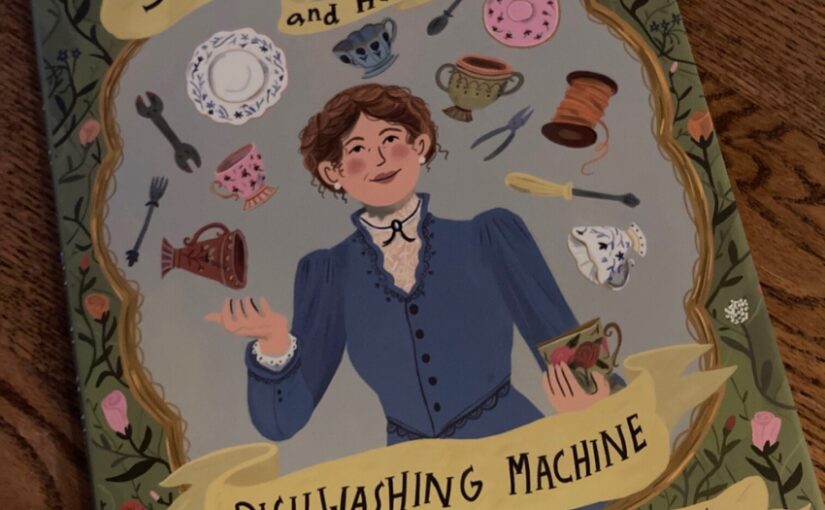



 Facebook
Facebook Twitter
Twitter Flickr
Flickr GooglePlus
GooglePlus Youtube
Youtube